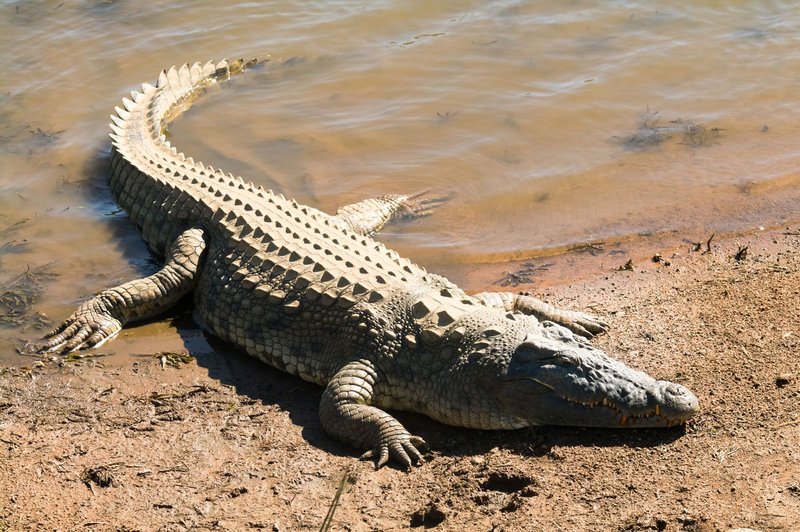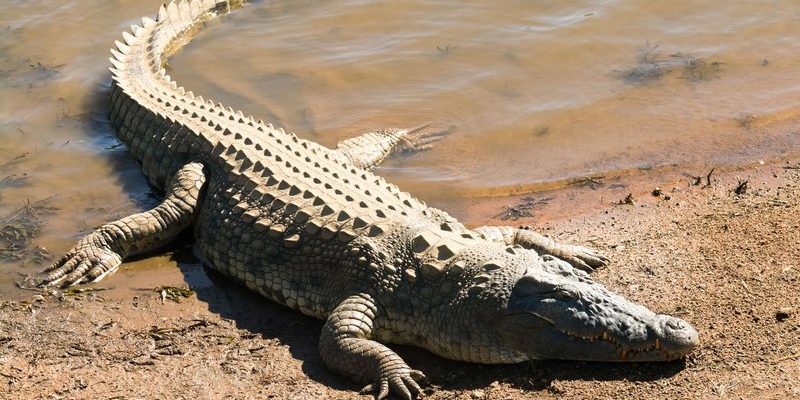
These creatures have a rich history, fascinating adaptations, and behaviors that would surprise you. So, whether you’re a nature enthusiast or just curious about this iconic reptile, let’s dive into ten captivating facts about Nile crocodiles that will make you see them in a whole new light.
1. Ancient Survivors: The Nile Crocodile’s History
The Nile crocodile has been around for about 200 million years. That’s right—it’s older than dinosaurs! Think of them as the original inhabitants of our planet who have adapted over eons. These reptiles have witnessed the rise and fall of many civilizations, including the ancient Egyptians, who revered them as sacred creatures.
You might be wondering how they have survived such drastic changes over millions of years. Nile crocodiles are incredibly adaptable. They can thrive in diverse habitats, from rivers and lakes to swamps and marshes. Their ability to withstand varying climates has been crucial to their endurance. So, when you see one basking in the sun or floating gracefully in the water, remember that you’re looking at a creature that has endured the test of time.
2. Impressive Size and Strength
Nile crocodiles are among the largest reptiles on Earth. They can grow up to 16 feet long and weigh over 1,500 pounds! Imagine trying to wrap your arms around a creature that massive. Their sheer size is intimidating, making them apex predators in their environment.
What contributes to their strength? Nile crocodiles have powerful jaws with around 60 sharp teeth that can exert a bite force of over 2,000 pounds per square inch. That’s like having the strength of a bulldozer in a single snap! This immense power helps them catch and hold onto prey, ranging from fish to larger animals like antelope.
3. Skilled Hunters: The Art of Ambush
Here’s the thing: Nile crocodiles are master ambush predators. They rely on stealth and patience to catch their food. When hunting, they can stay submerged for long periods, only exposing their eyes and nostrils above the water. This ability allows them to blend seamlessly into their surroundings.
Once they spot an unsuspecting target, they can launch themselves with incredible speed and precision. They often grab their prey with those powerful jaws and perform a “death roll”—a whirlpool-like maneuver to drown their victim or tear apart large chunks of flesh. It’s a brutal but effective method that shows just how well they’ve adapted to their role in the food chain.
4. Temperature-Dependent Sex Determination
Did you know that the temperature of the nest determines the sex of baby Nile crocodiles? That’s right! Eggs that are incubated at warmer temperatures tend to hatch into males, while cooler temperatures lead to females. This fascinating phenomenon is a brilliant adaptation to environmental changes.
In the wild, this means that if the climate warms up, more males will be born, which can affect mating patterns down the line. It’s quite a unique strategy that showcases how these reptiles have balanced their reproduction with their surroundings. You might think of it as nature’s way of keeping the species thriving.
5. Social Behaviors and Communication
While many people see crocodiles as solitary creatures, Nile crocodiles actually exhibit interesting social behaviors. They can be seen basking in groups, establishing social hierarchies within their communities. It might remind you of a high school cafeteria—every crocodile has its spot!
Communication is also key among these reptiles. They use a variety of vocalizations, from grunts to growls, especially during the mating season. Mothers are particularly attentive, using soft sounds to encourage their hatchlings to follow them to the water. This nurturing behavior may surprise you, given their fierce reputation!
6. Unique Feeding Habits
Nile crocodiles are not picky eaters. Their diet consists mainly of fish, but they’re opportunistic hunters. This means they’ll take advantage of whatever food source is most available, including birds, mammals, and even the occasional carrion.
What’s fascinating is their feeding technique. Unlike many predators that chew their food, crocodiles often swallow their prey whole or tear it apart. Their stomachs are specially designed to digest tough materials and bones, allowing them to make the most out of every meal. Imagine having a meal plan where you could eat anything without worrying about how you’ll digest it!
7. The Importance of Habitat and Conservation
The Nile crocodile plays a crucial role in its ecosystem. As apex predators, they help maintain the balance of fish populations, which in turn affects the health of aquatic environments. So, when we think about conserving these magnificent creatures, we’re also preserving their habitats—rivers, lakes, and wetlands—essential for many other species.
However, Nile crocodiles are facing threats from habitat loss due to human activities like agriculture and urbanization. Additionally, poaching for their skin and meat has also contributed to their decline in certain regions. Conservation efforts are vital to protect these magnificent reptiles and their ecosystems. We all have a responsibility to cherish and support wildlife preservation.
8. The Nile Crocodile’s Unique Adaptations
One of the coolest adaptations of the Nile crocodile is its ability to see and hear underwater. Their eyes and ears are positioned on top of their heads, allowing them to remain mostly submerged while maintaining excellent visibility. It’s like having a periscope!
Their skin is another fascinating feature. Covered in tough, scaly armor, it provides protection from predators and injuries. Plus, it has a unique ability to regulate body temperature. They can absorb heat from the sun or cool down in the shade, adapting to their environment with ease.
9. Lifespan and Maturity
Nile crocodiles have a long lifespan, often living over 70 years in the wild. Imagine all the experiences they’ve had over those decades! They reach sexual maturity at around 10 to 15 years, which may seem like a long wait, but it ensures that they have the size and strength to reproduce successfully.
During mating season, males use displays of aggression and vocalizations to attract females. It’s a mix of charm and power, showcasing their fitness to potential mates.
10. Cultural Significance in History
Lastly, the Nile crocodile holds significant cultural importance in ancient Egyptian mythology. The goddess Sobek, often depicted as a crocodile or a man with a crocodile head, was believed to protect the pharaohs and grant fertility to the land. The crocodile was a symbol of power, fertility, and protection.
Even today, many cultures recognize the Nile crocodile’s impressive qualities. It’s more than just a fearsome predator; it’s a creature that has shaped history and culture for thousands of years.
In conclusion, the Nile crocodile is a remarkable creature that deserves our respect and admiration. From their ancient lineage to their unique adaptations and fascinating behaviors, there’s so much to learn about these incredible reptiles. Whether you see them in documentaries or when visiting their natural habitats, remember that they are vital to our world. So next time someone mentions Nile crocodiles, you can impress them with all the amazing facts you’ve learned!

